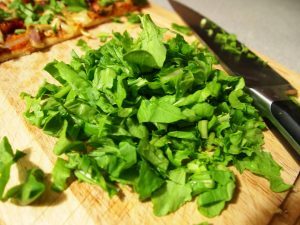 Barb Ingham, UW-Extension Food Scientist
Barb Ingham, UW-Extension Food Scientist
Department of Food Science
UW-Madison College of Agricultural and Life Sciences
bhingham@wisc.edu
TRANSCRIPT
Lorre Kolb: Outbreaks linked to fresh produce. We’re visiting today with Barb Ingham, Extension Food Safety Specialist, Department of Food Science, University of Wisconsin-Madison/Extension, in the College of Agricultural and Life Sciences, and I’m Lorre Kolb. Barb, why are we seeing an increase in illness and food recalls due to fresh produce?
Barb Ingham: Nationwide we do see foodborne illness and outbreaks linked to contaminated fresh produce, they’ve been on the rise for a number of years. And this is primarily because, unlike meats which are actually cooked to ensure safety, fresh fruits and vegetables don’t have any type of a heating step or a “kill step” which would help to ensure that they’re safe to consume. Growers, processors and manufacturers of fruits and vegetables do their best to ensure the safety of the food that they grow or sell, but harmful bacteria or parasites can be in the soil or water where produce grows and these can come into contact with fruits and vegetables and actually contaminate them. Produce can also be contaminated after its harvested, such as when it’s being washed perhaps in a commercial operation or during storage and preparation.
Lorre Kolb: So what are some things that people can do to protect themselves from contaminated produce?
Barb Ingham: There are four steps that consumers can take. The first step would be to buy right. Choose produce that’s not bruised or damaged. If you’re buying produce that’s already processed like pre-cut melon or bagged or packaged produce choose only those items that are refrigerated or perhaps surrounded by ice. Another step would be to store the fruits and vegetables properly. Store perishable fresh fruits and vegetables or those that are pre-cut or packaged in a clean refrigerator or at a temperature of 40 degrees Fahrenheit or below. Our third step is to separate for safety, so keep fruits and vegetables that are eaten raw separate from raw meats, poultry and seafood. And then our last step is to prepare safely. You always begin with clean hands. In preparation discard bruised or heavily damaged produce and wash whole fruits and vegetables before we eat them.
Lorre Kolb: What about the pre-washed produce such as bagged salad greens?
Barb Ingham: For pre-cut, bagged or packaged produce items, these are pre-washed in the manufacturing process so we don’t recommend that consumers have an additional wash step for those.
Lorre Kolb: What are signs or symptoms of food illness?
Barb Ingham: Sometimes illness can occur in as little as twenty minutes or it can actually take up to six weeks, which makes those illnesses really hard to track. General signs of foodborne illness are vomiting, diarrhea, abdominal pain, sometimes a fever, a headache maybe body ache. If you think you or a family member has a foodborne illness, we do recommend that individuals contact their health care provider immediately.
Lorre Kolb: We’ve been visiting with Barb Ingham, Extension Food Safety Specialist, Department of Food Science, University of Wisconsin-Madison/Extension, in the College of Agricultural and Life Sciences, and I’m Lorre Kolb.



